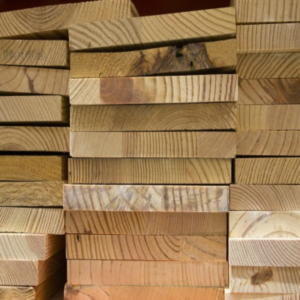Tips To Identify And Properly Dispose Of Preservative-Treated Wood

The very fact that readers are looking into proper protocols when it comes to the disposal of treated wood goes to show that many people have the environment in mind as of late. According to the National Pesticide Information Center (NPIC), there are local regulations when it comes to the types of wood, which chemicals it was treated with and if your municipality’s trash company will take it away. As the NPIC states, it’s best to both contact your local government to learn about how this wood should be disposed of while making sure to never burn pressure-treated wood, as “the resulting smoke can contain toxic chemicals hazardous to people and the environment.”
There are a number of ways to easily determine if the wood you need to dispose of has been treated with a preservative. These include a stamp that indicates the grade, preservative used and retention, wood species, and other information. Most treated lumber has a greenish color due to the presence of copper. However, some treatment are colorless, but these formations often add a colorant for branding.
Although the majority of treated wood is currently land filled, a better option would be to recycle or reuse this material. I am particularly interested in the ability to remove and capture the wood preservative for reuse and then use the wood for green products such as bio-based spray foam insulation. For more information on this option, please click HERE.
Meet the Author
Dr. Todd Shupe is the President of Wood Science Consulting, LLC. He is a well-recognized expert on wood forensics, wood preservation, wood decay and degradation, and wood species identification. He has a broad background in new product development, quality management, and marketing and sales in both the public and private sectors. For more information please visit DrToddShupe.com.
We welcome your comments below.
Thank you for visiting. We trust that you have enjoyed reading our articles.
Liked this post? Read more below or search for more topics . . .

